It was a beautiful afternoon when we arrived in Oviedo. The compact but characterful and historic 'casco antiguo' (Old Town) of Asturias' civilised capital is agreeably offset by elegant parks and busy, modern shopping streets. Oviedo's university was founded in 1608, and industry took off in the 19th-century - the city today is a major producer of textiles, weapons and food. A siege at the beginning of the Spanish Civil War destroyed much of the Old Town, but now restored we found it a fascinating place to explore.
The Catedral de San Salvador is the main sight, beautifully-located on the Plaza de Alfonso II
. The cathedral's origins and main interest lie in the Camara Santa, a pre-Romanesque chapel built by Asturian king Alfonso II to house holy relics. The highlight here as vividly described by our comprehensive audio-guide was the Santo Sudario, a cloth said to have covered Christ's face.
Wandering around central Oviedo, we found ourselves in pretty plazas and ran into an array of striking modern open-air sculptures, the most memorable being a pair of legs topped by a pair of large buttocks, and a statue of Woody Allen. Allen expressed a particular affection for Oviedo when filming here for his 2008 movie Vicky Cristina Barcelona.
We made a couple of day trips from Oviedo. Firstly, we took the frequently-stopping regional FEVE train to Cudillero, a picturesque fishing village on the Asturian coast. Here the houses, painted in varying pastel shades, cascade down to a tiny port on a narrow inlet. Keen to get in some beach time, we headed out to the lookout, La Garita, perched high above the harbour and continued to the fine, sandy Playa de Aguilar.
There's some gorgeous country in southwest Asturias. The second day trip saw us take a bus to Tunon (25mins) where we rented bikes to cycle the Senda del Oso (Path of the Bear), a 20km cycling and walking track along the course of a former mine railway between the villages of Tunon and Entrago
. With easy gradients, we cycled through increasingly spectacular valley scenery into deep, narrow canyons, with several bridges and tunnels. However, the main objective of this outing was bear-spotting! The Senda del Oso passes the Cercado Osero, a 40,000-sq-metre hillside compound home to three female Cantabrian brown bears. These lumbering beasts can reach 250kg and live 25 to 30 years, and have traditionally been disliked by farmers even though they are almost entirely vegetarian. From very low numbers in the mid-1990s, public support has played a big part in the bear's recent recovery in the Cordillera Cantabrica, which owes a lot to the celebrated bears of Asturias' Senda del Oso. We duly spotted Paca, Tola and Molinera although they didn't look entirely happy in their large enclosure.
Oviedo has a few culinary highlights. Ancient documents show Asturians were glugging cider as far back as the 8th century! We were after a bit of this old tradition, so headed out one evening to the 'sidrerias' of Calle de la Gascona
. Here cider is served 'escanciada', that is, poured from a bottle held high overhead into a glass held low, which gives it some fizz. On this street bartenders show off their skills by not even looking at the glass or bottle as they pour, often chatting to somebody else over their shoulder at the same time. Yes, a fair amount does end up on the floor, but it is a unique spectacle. A shot of cider is known as a 'culete' or 'culin' and should be immediately knocked back in one before the fizz dissipates. A bit different from enjoying a pint of Strongbow at your local pub...
Sophie was delighted when we discovered Calle de los Vinos on a Monday night where we embarked on a 'wine and tapas crawl' at ridiculously low prices. Sam was equally ecstatic when he got to feast on the massive Asturian 'cachopo' (breaded veal stuffed with ham, cheese and vegetables). Amazing!
Onward bus to Elciego, La Rioja, via Logrono, 6 hours.
Cider and Bears...
Sunday, August 09, 2015
 Oviedo, Asturias, Spain and Canary Islands
Oviedo, Asturias, Spain and Canary Islands
Other Entries

 Oviedo, Asturias, Spain and Canary Islands
Oviedo, Asturias, Spain and Canary Islands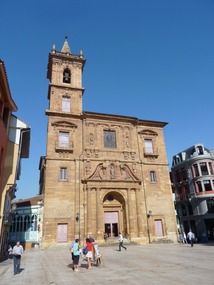
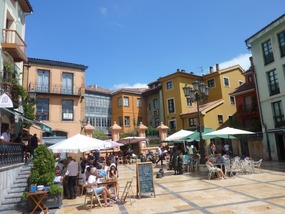
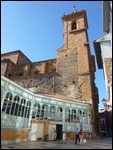


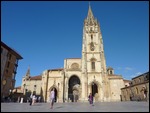
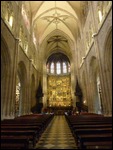

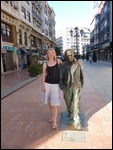
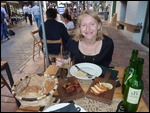
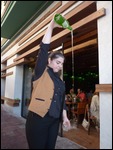
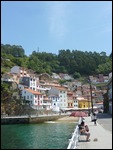
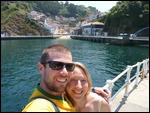
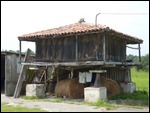


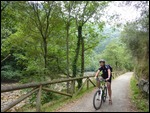


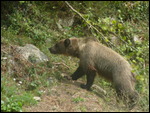
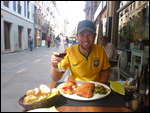
2025-05-23